Simple honey labels - DIY
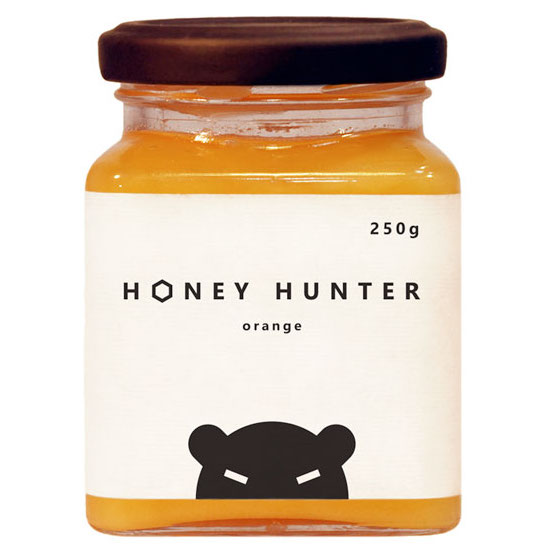
Honey hunter …
What sort of honey labels do you use? Of course, if you keep it all for yourself or just give it to friends and family that question could be Do you label your honey? However, if you sell it via a third party or direct there are regulations that govern the labelling of honey for sale to consumers. I’m not going to attempt to decipher these rules or provide guidance on what is legal and what is not – it’s a minefield and involves Packaged Goods Regulations, Weights and Measures Act, Food Labelling Regulations and, last but by no means least, the Honey Regulations. It differs whether you’re selling direct or via a third party and the rules probably differ in England and Scotland. Phew! You are advised to talk to your local Trading Standards people who will advise you.
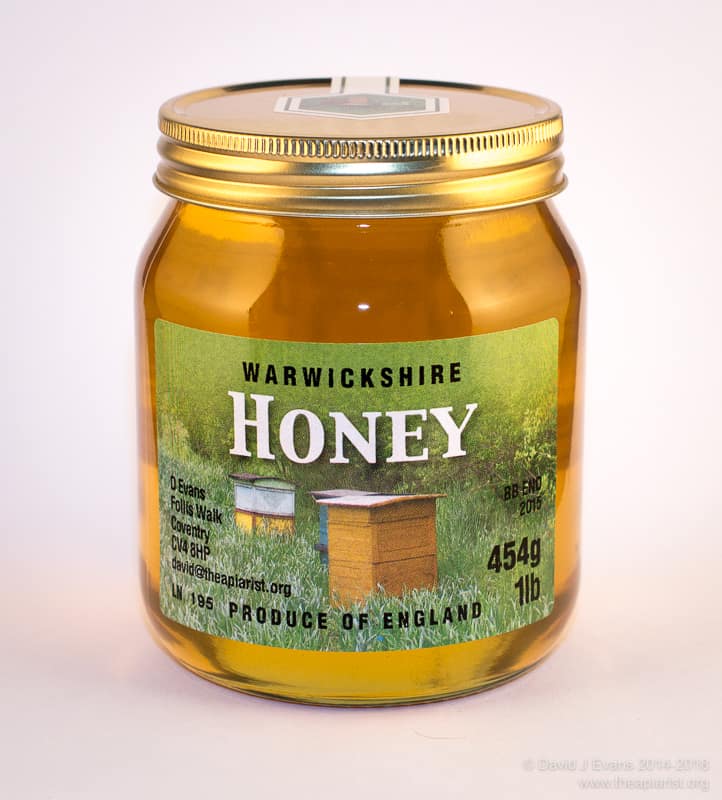
Commercial label
The beekeeping suppliers offer a wide range of pre-printed and customisable labels. Before moving to Scotland I used colour, high gloss, ‘easy-peel’ removable labels. Although they looked attractive I was never sure they actually contributed significantly to sales. The investment in labels discouraged me from from changing from 1lb ’rounds’ to 12oz hex jars (where the profit margins are higher 😉 … How many farm shops, garden centres and similar places now sell 1lb jars?) and I had no flexibility in making smaller batches for particular honey types. Having now moved and got a few buckets of Scottish honey from the summer I needed to make some new labels. Since the majority of my sales initially are going to be direct and local I wanted a simple label that didn’t obscure too much of the jar, was easy to read, straightforward to customise and – ideally – inexpensive and easy to produce at home. I’ve also always liked the rather stylish designs like the Honey Hunter labels at the top of the page (though these probably aren’t legal for 3rd party sales in the UK) and thought DIY label-printing might be an inexpensive way to try and achieve something similar.
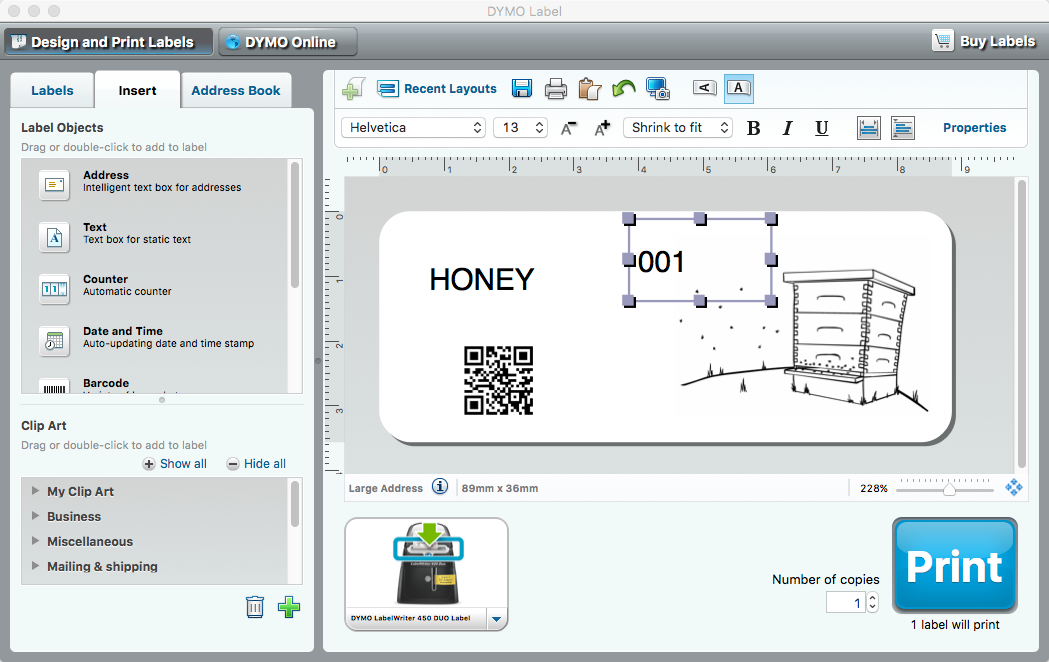
Dymo labelling software …
I’ve got a Dymo LabelWriter 450 Duo. These printers use thermal printing technology so have no toner cartridges or ink. Dymo also provide an application (Mac and PC) for label design and printing (right). It’s relatively intuitive to use but has a few quirks. However, it allows embedding of pictures, barcodes, auto-incrementing numbers and supports the majority of fonts available on your system, though not all font sizes are possible for some reason. Standard format images (PNG, GIF, JPG) can be embedded, resized and rotated. There are useful formatting tools like left/right/top/bottom align, reordering front/back of overlapping objects and the ability to create templates and save label designs. There’s also the ability to create curved text though I’ve not used this. Irritatingly there’s no way to print to the very edge of the label – none of the images or text can be placed closer than about 1.5mm from the label edge and this distance is slightly greater on the left hand side of the label. Nevertheless, the Dymo Label™ software makes designing and printing labels, one at a time or dozens sequentially numbered, a doddle.

Simple honey labels …
It was straightforward to design and print labels for 8oz, 12oz and 1lb jars in small numbers, each carrying a different batch number, best before date, honey type etc. The printing is very sharp, smudge-free (even immediately after printing) and water-resistant, though the label probably isn’t. The original Dymo labels can be easily and cleanly removed from jars without leaving a residue. I used these labels in the run-up to Christmas and – although functional and perhaps a little utilitarian – received no adverse comments. Since I have apiaries in several locations I can easily run off customised labels for individual places, without significant investment or breaking the plethora of regulations that govern honey labelling. If you sell honey to guest houses or garden centres (for example) it is easy to prepare personalised labels in small quantities very economically.
Printer and label costs
Although the list price of these printers is a bit steep, the usual online stockists often offer ~50% reductions. At the time of writing Amazon are selling the LabelWriter 450 printer and 3 assorted label rolls for about £50. Replacement Dymo thermal paper rolls are usually a bit over a tenner for 500+ labels of suitable sizes, but you can purchase compatible generic thermal paper rolls for significantly less. For example, Dymo #99012 (36mm x 89mm) are £12.75 for 2 x 260 whereas well reviewed, compatible, generic equivalents are £7.98 for 5 x 260 … or about 0.6p/printed label. However, don’t bother with the generic ‘clear’ compatible labels. Firstly, they aren’t anything like clear (!) and they also smear very badly. Remember that thermal printers use different printing technology and don’t use toner like inkjet or laser printers so there are no additional running costs 🙂
- Personalised labels …
- Granulated honey …
- Small batches …
But they’re not in colour … ?
Thermal printers only print black on the label background colour, which is almost always white. For just a splash of colour you could use fluorescent marker pens, for example to highlight the banding on a ‘cartoon’ of a bee. For more extensive colour it’s relatively easy to produce labels on a suitable laser printer … the subject of a future post. For comparison, suitable Avery labels cost 3-4p per label (excluding the outlay on hardware and toner) but you need to print a minimum of a dozen (one sheet) at a time.
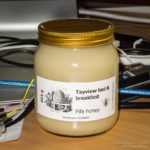
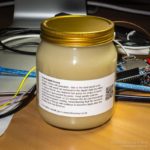
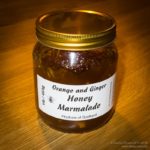
Join the discussion ...